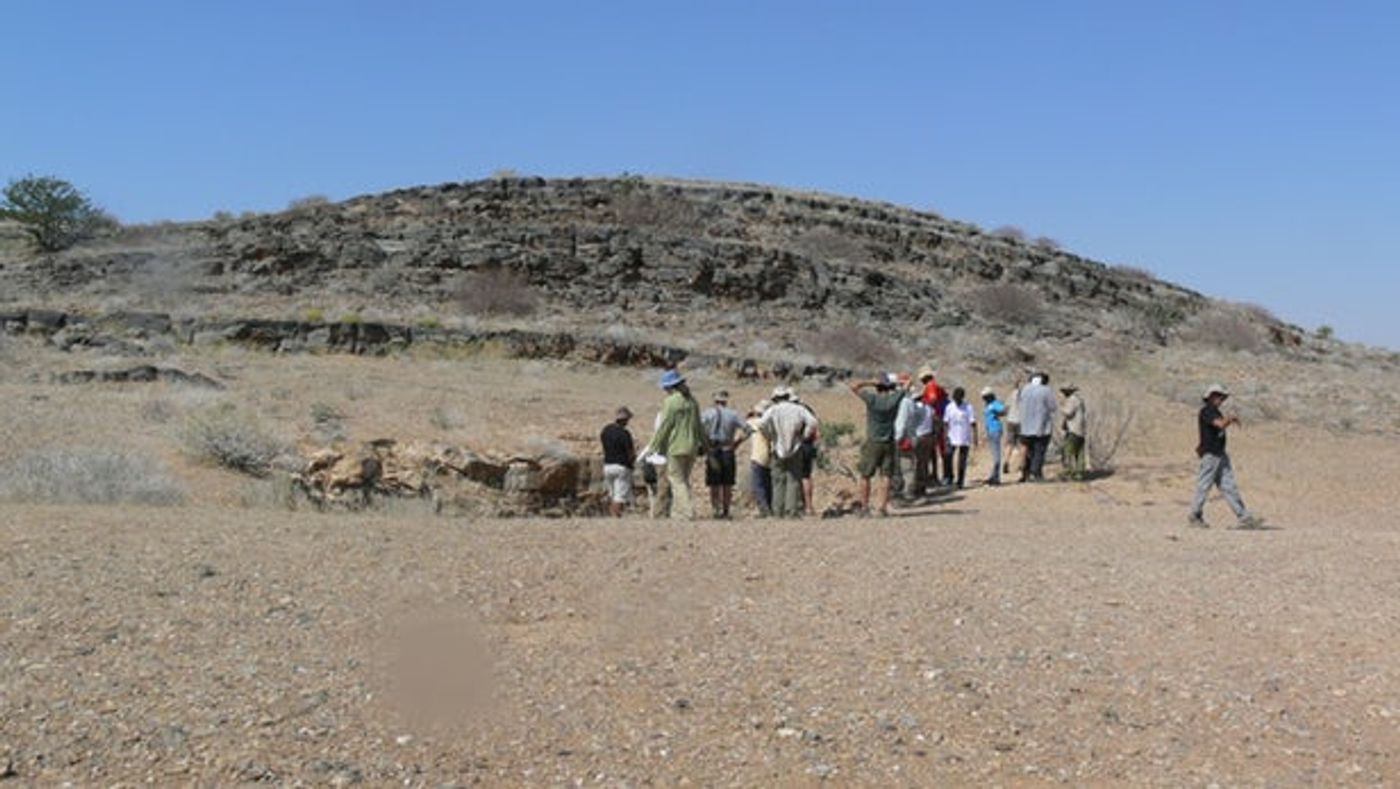Uncovering Namibia's glacial past
Upon embarking on a research trip in the vast deserts of Namibia, geologists from West Virginia University realized as soon as they got in the field that they were looking at something quite unique: formations of long, steep hills called drumlins that are reminiscent of glaciers from millennia before. Watch the video below to see how drumlins are formed.
The geologists, Graham Andrews and Sarah Brown, commented on their surprise: "We quickly realized what we were looking at because we both grew up in areas of the world that had been under glaciers, me in Northern Ireland and Sarah in northern Illinois," said Andrews, an assistant professor of geology. "It's not like anything we see in West Virginia where we're used to flat areas and then gorges and steep-sided valleys down into hollows."
"The last rocks we were shown on the trip are from a time period when southern Africa was covered by ice," Andrews said. "People obviously knew that part of the world had been covered in ice at one time, but no one had ever mentioned anything about how the drumlins formed or that they were even there at all."
In fact, it turns out that the drumlins hadn’t been previously studied – and so with the addition of WVU geology senior Andy McGrady to the team, the researchers set about using morphometrics and image data from Google Earth and Google Maps to analyze what the shapes of the drumlins could tell them about the glaciers that once covered the land.
What they found was unexpected. Instead of showing evidence of normal glacial growth patterns (slow growth and melting), the drumlins had large grooves, which pointed to a faster rate of glacial growth – what’s called an ice stream. This analysis is the first of its kind to provide evidence of the existence of an ice stream in southern Africa during the late Paleozoic Age. It was published in PLOS One.
"The ice carved big, long grooves in the rock as it moved," reiterates Andrews. "It wasn't just that there was ice there, but there was an ice stream. It was an area where the ice was really moving fast."
Besides the discovery of the ice stream, the study provides support for two previously determined theories as well, confirming, one, that southern Africa was located over the South Pole about 300 million years ago, and two, that southern Africa and South America were once connected. “Recognition of a paleo-ice stream in northern Namibia supports interpretations of glaciogenic sedimentary successions (Itararé Group) in southern Brazil that suggest the presence of major, terrestrial glacial outlet systems in southern Africa during the LPIA,” write the authors. The conclusions are also helpful to remind us to always keep exploring, because, as stated WVU chair of the Department of Geology and Geography, Tim Carr, there is still much that “remains to be discovered."
Sources: PLOS One, Science Daily










